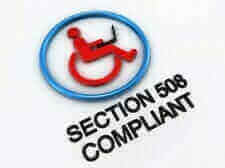
For as many topics as I see on blogging and bloggers one of the most overlooked, yet perhaps most important topics I rarely see talked about is accessibility. While this is by no means a simple topic nor is a perfectly accessible site something that can be derived with ease, there are a few things every blogger should (but usually doesn’t) remember about accessibility.
1.) Accessibility is about more than the blind
This is perhaps one of the most overlooked aspects of accessibility in all areas of the web not just blogging. When we do think about accessibility on our blogs we will nearly always think of it in terms of making our blog readable to those who are blind or otherwise vision impaired. While this is necessary it leaves out so many others who’s needs are equally as problematic when it comes to reading and understanding out content. This includes the hearing impaired, those with learning disabilities, and even in some cases something as seemingly simple as a viewer with 20/20 vision who is colorblind.
When you develop your blog and its content try to remember that if you want everyone to read your writing than you must in fact write for everyone. In addition, while media such as videos might be interesting to some, videos without captions immediately exclude an entire portion of the population from your content without even trying.
As you develop your content it therefore becomes your responsibility to make sure that not only can a screen reader pick up most of it, but in fact that every other person who has a limitation other than blindness can do so as well. Watch your color contrast, add captions to audio/video content, write in a manner that does not require a PhD to comprehend, etc.
Making our content available to everyone might take a little extra work but as the goal of many of us as bloggers is community it will help us foster out own communities in such a manner as to truly encompass all who are interested in our topic. Not just those who are lucky enough to be able to read our site without limitation.
2.) Accessibility is not SEO
In the defense of many bloggers I know, most do think of accessibility at some point in the design process. The catch is most think of accessibility as a component of or an extension to SEO.
While both SEO and accessibility are elements of UI that cannot be separated, putting them together can be just as dangerous. SEO is the art of making your content readable to a machine, namely a search bot. Accessibility on the other hand is the art of making your content both readable and understandable to all people regardless of physical or developmental limitations. In the end, as it is the people we wish to have read our content, lumping your accessibility practices into your SEO might help for a few but it will never fulfill the needs of all users who could otherwise gain insight from your work.
3.) Never underestimate your forms
While content is paramount to most bloggers it is not always the primary reason they blog. For most of us we also hope to at least supplement out income with our blogs and to do so we must have our users provide us with some sort of information at some point during their visit to our sites. For almost all of this information we will rely on good-ole’ HTML forms to be the bridge between our content and our wallets.
How many times have you browsed a mobile site only to hit a form that wouldn’t display on your phone or one in which you couldn’t quite click the tiny checkbox presented or found some other limitation in the form design preventing you from submitting it? I’d be willing to bet that even if you have absolutely no physical or developmental limitation this has still happened to you at least once. Now put yourself into the position of someone who has had their mobility diminished for one reason or another. If you could not finish the form how could they? Sometimes the form elements we choose based on our own experience can quickly become an issue to those who are less fortunate or simply using different equipment.
When designing your forms make sure you do so with as many folks as possible in mind. Use labels, proper field structure, and other tricks to make sure that everyone can submit your form from every device imaginable. Failure to do so even for one user means that you have made at least one less sale for no other reason than your lack of attention to detail. There is no reason this should ever happen to your site.
Putting it together
Remember that accessibility isn’t just for someone else’s site. Regardless of the topic you write about there is a population out there who could become part of your community if you simply provide them an opportunity to do so.
So what is your experience with accessibility and blogs? Please share your thoughts.
 Chris Wiegman
Chris Wiegman